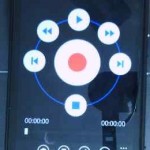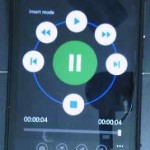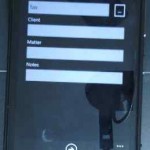Last week I attended one of the Bighand regional roadshows, held again at Gordons LLP in Leeds (I so wish other Legal IT vendors would do these local visits, why should the customer travel down to London all the time?).
I came away thinking there wasn’t much new in the latest releases. But then I guess that’s what a good piece of software should do, tweak a little but don’t add so many features that you ruin the core thing your software does well.
But there were a few new “tweaks”, some of which I’ve highlighted below. The information here is from my notes rather than any official press release, so if you like the look of a feature you may want to check with Bighand rather than trust my note taking! (For info, the notes were taken using the excellent OneNote app on the new Windows Phone 7, which auto syncs with the OneNote webapp via Microsoft’s SkyDrive. I’m drafted this blog post using said webapp on my PC and am finishing off using OneNote in Office 2010 – all integrated beautifully!).
New in v4 of Bighand.
Profiling
Profiling is available in v4. Similar to how a DMS (Document Management System) profiles documents you can do with your dictations. This then builds up title (saving the lawyer typing up a random title). This profile information can be populated from other systems e.g. Client matter information from the practice management systems. This profile information is then available in the BlackBerry client also.
Practice builder
An additional product that allows for a “drill down” interface as the starting point to get into your dictation. You select your client, “drill down” to the relevant matter and then start the dictation. It’s all about trying to make it easier to build a title without need to type it all in.
At the moment an xml file is used to populate the profile and “drrill down” information. But they say they are looking at a SQL connector in later releases.
Workflows
These have been expanded to allow multi-step workflows. For example, before a dictation is routed through to the secretary it could go through speech recognition and then a proofing step. It makes more use of the “attach file” functionality, allowing a much more complex (and useful?) workflow to be built. There are plans to look at hooking in 3rd party steps, although an SDK for the workflow is not yet on roadmap so it’s early days in the thinking.
Bookmarks
A small but pretty neat addition is allowing the adding of bookmarks at points in the dictation. So a fee earner could, for example, add a bookmark to ask their secretary to check a name as they’re dictating. Or a secretary could add things to clarify with the fee earner. This bookmark information is displayed in the application as each bookmark is passed when playing the dictation. It could be very useful in conjunction with the new multi step workflows.
Send anywhere
This function allows you to send a dictation to any secretary or department without the need to add a specific workflow to do it. It can still be configured to how you want.
There is also the ability to easily set dictation to confidential without need to set up specific options for this. This goes straight to the assistants folder. If a co-ordinator can see that particular workflow they would only see an item titled “confidential dictation”, but they would not be able to open it.
Improvements in speech recognition
The average processing time that Bighand see for 10min dictation on standard specification server is about 6mins (although there was feedback from the room that a firm using speech recognition was seeing processing that was a lot quicker – and they were just running on high power desktop. They were seeing a 30min dictation being processed in 2mins).
Other information Bighand gave was:
- They fed back that they now have about 1000 customers using speech recognition now.
- You can spread speech recognition across multiple servers for improved performance, but it does require its own server.
- Typically it takes about 20-30mins of dictations to get it to learn your voice. There is an addin to Word where corrections are applied, which are then fed back to the system.
- Works with a number of non English languages. Those mentioned were: German, Dutch, French, Spanish. There is a Legal dictionary available in some.
- It was mentioned that it requires good training on how to dictate. Requires consistency in volume, consistency in how you dictate etc otherwise get worse recognition rates.
Pre-learning tool
They showed a new addition to speech recognition, the pre-learning tool. This can look at last 7 days of your dictations. You can then play these and paste the doc you produced from the dictation into this tool. This then trains the speech recognition from previous work to your voice. Benefits here are that it would allow a secretary to feed the pre-learning tool on behalf of the fee earner.
Mobility
Main news here was that an Android client is now available. And in the BlackBerry application there are extra functions in email. Allows you to jump from an email straight to dictate, then when you send the dictation it includes the email from where you triggered the dictation.
iManage integration
There is now a bighand dictation option available on right click of folder within Desksite/Filesite. This then populates the profile in bighand and knows where to create document. It attaches an nrl link to the dictation. Basically uses the SDK that is available to use. Extra licence through for the SDK.
There was also mention of an addition of client side speech recognition for v4.1, I didn’t take too many notes on this as I see the server side solution as a much better option. Although for small firms the cost benefit of a server-less solution may be better.
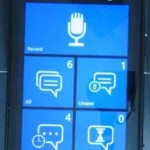 Each of the tiles below (to show all dictations, unsent dictations etc) can be pinned to your home screen where each one would act as a live tile giving you instant updates as to how many dictations are at what stage.
Each of the tiles below (to show all dictations, unsent dictations etc) can be pinned to your home screen where each one would act as a live tile giving you instant updates as to how many dictations are at what stage.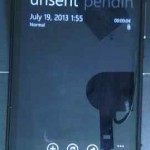 And the screen for dictating has been “flattened” to ensure it feels “Windows Phone” like.
And the screen for dictating has been “flattened” to ensure it feels “Windows Phone” like.

